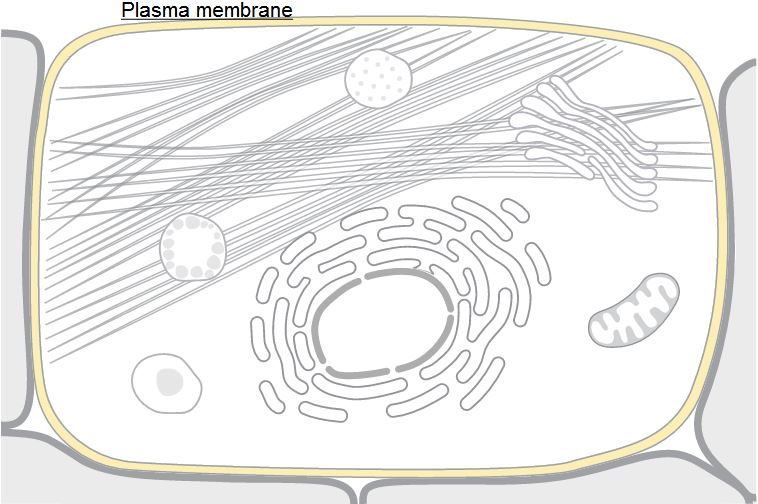Introduction of NPFFR1
Neuropeptide FF receptor 1 (NPFFR1), also known as NPFF1, is the human protein encoded by the NPFFR1 gene. NPFF is the endogenous octapeptide membrane belongs to the family of neuropeptides which display a conserved Arg-Phe-NH2 at the C-terminal end. The NPFF can be detected in periaqueductal gray, dorsal spinal cord, medulla pons, and the hypothalamus with high concentrations. NPFF1 and NPFF2 are two G protein-coupled receptors isolated from human central nervous system issues and the expression level of NPFFR1 mRNA is higher in the central nervous system (CNS) than in peripheral tissues.
| Basic Information of NPFFR1 | |
| Protein Name | Neuropeptide FF receptor 1 |
| Gene Name | NPFFR1 |
| Aliases | NPFF1, GPR147, NPFF1R1, OT7T022 |
| Organism | Homo sapiens (Human) |
| UniProt ID | Q9GZQ6 |
| Transmembrane Times | 7 |
| Length (aa) | 430 |
| Sequence | MEGEPSQPPNSSWPLSQNGTNTEATPATNLTFSSYYQHTSPVAAMFIVAYALIFLLCMVGNTLVCFIVLKNRHMHTVTNMFILNLAVSDLLVGIFCMPTTLVDNLITGWPFDNATCKMSGLVQGMSVSASVFTLVAIAVERFRCIVHPFREKLTLRKALVTIAVIWALALLIMCPSAVTLTVTREEHHFMVDARNRSYPLYSCWEAWPEKGMRRVYTTVLFSHIYLAPLALIVVMYARIARKLCQAPGPAPGGEEAADPRASRRRARVVHMLVMVALFFTLSWLPLWALLLLIDYGQLSAPQLHLVTVYAFPFAHWLAFFNSSANPIIYGYFNENFRRGFQAAFRARLCPRPSGSHKEAYSERPGGLLHRRVFVVVRPSDSGLPSESGPSSGAPRPGRLPLRNGRVAHHGLPREGPGCSHLPLTIPAWDI |
Function of NPFFR1 Membrane Protein
As opiate tolerance and dependence are major clinical and social problems, the neuropeptide FF isolated from the human central nervous system is believed to be implicated in pain modulation as well as opiate tolerance and plays an important role in these processes. Some studies also have shown that NPFF is involved in various physiological processes, including food intake, blood pressure regulation, insulin release, memory, and electrolyte balance. In addition, NPFF presents both anti-opioid and pro-opioid actions in different animal models of pain, although its exact mechanism is currently unknown. The research suggesting that NPFF elicits its actions through a G protein-coupled receptor, which can specifically bind and be activated by NPFF and the related peptides.
 Fig.1 Subcellular location of NPFFR1.
Fig.1 Subcellular location of NPFFR1.
Application of NPFFR1 Membrane Protein in Literature
NPFFR1, NPFFR2, and their endogenous ligand NPFF present anti-opioid properties and play important roles in the adverse effects. Authors in this group seek to identify the novel NPFF receptor ligands based on a series of heterocycles as rigidified non-peptide NPFF receptor ligands.
NPFF and its receptors (NPFF1R and NPFF2R) have been served as an important pronociceptive system involved in analgesic tolerance and opioid-induced hyperalgesia. This article gives a strategy which leads to the development of novel and potent antinociceptive drugs.
This article reveals that there is an RFFP system in the pig and NPFFR2 is important for pubertal onset in gifts. The mechanism is still unclear now.
This article reveals that it is reasonable to produce effective nontolerance forming antinociception when designing the multifunctional peptide ligands for opioid and NPFF receptors in a single molecule.
This article designs an orally active peptidomimetic antagonist of NPFFR which can potentiate the opioid-induced analgesia. This derivative provides a novel therapeutic approach to improve analgesia and reduce hyperalgesia.
NPFFR1 Preparation Options
In order to obtain the soluble and functional target protein, the versatile Magic™ membrane protein production platform in Creative Biolabs enables many flexible options, from which you can always find a better match for your particular project. Aided by our versatile Magic™ anti-membrane protein antibody discovery platform, we also provide customized anti-NPFFR1 antibody development services.
Equipped with advanced platforms and extensive experience, Creative Biolabs has won good reputation among our worldwide customers for the successful membrane protein discovery services. If you are interested in our services, please feel free to contact us for more information.
All listed services and products are For Research Use Only. Do Not use in any diagnostic or therapeutic applications.